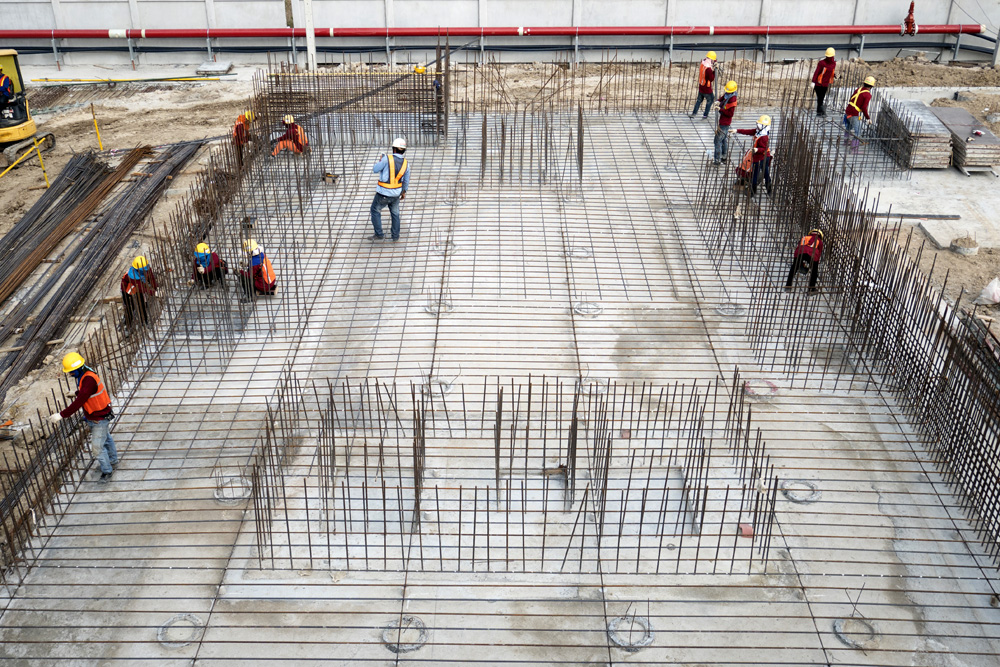
Application of Overstrength Factor – How Deep Does It Go?
When your columns are required to be designed for load combinations with overstrength, do you also need to design the foundation supporting those columns for amplified forces. Let’s find out from the following question we received recently and the response we provided.
Q. My understanding is the code does not require foundations (only connections where applicable) to be designed for the overstrength factor (uplift and bearing). I am specifically referring to foundation uplift on a column supporting a discontinuous system. Is this correct?
A. Your understanding is correct, but for one exception in ASCE 7-10, 7-16 Section 12.2.5.2, Cantilever Column Systems. The second paragraph of Section 12.2.5.2 reads:
Foundation and other elements used to provide overturning resistance at the base of cantilever column elements shall be designed to resist the seismic load effects, including overstrength of Section 12.4.3.
Please also note the Exception to 2018 IBC Section 1810.3.8.3.2, Seismic Reinforcement in Seismic Design Category C, and the Exception to Section 1810.3.8.3.3, Seismic Reinforcement in Seismic Design Categories D through F. Both exceptions allow SDC B detailing in higher-SDC spirally reinforced precast prestressed piles, if the design loads transmitted from the superstructure to the foundation are amplified by the applicable overstrength factor.
The 2016 California Building Code has made the following modification to ASCE 7-10 Section 12.13.1, [Foundation] Design Basis, in Section 1616.10.14, applicable to community colleges in California and in Section 1616A.1.16, applicable to hospitals and schools in California:
1616.10.14, 1616A.1.16 ASCE 7, Section 12.13.1. Modify ASCE 7 Section 12.13.1 by adding Section 12.13.1.1 as follows:
12.13.1.1 Foundations and superstructure-to-foundation connections. The foundation shall be capable of transmitting the design base shear and the overturning forces from the structure into the supporting soil. Stability against overturning and sliding shall be in accordance with Section 1605.1.1.
In addition, the foundation and the connection of the superstructure elements to the foundation shall have the strength to resist, in addition to gravity loads, the lesser of the following seismic loads:
- The strength of the superstructure elements.
- The maximum forces that can be delivered to the foundation in a fully yielded structural system.
- Forces from the Load Combinations with over-strength factor in accordance with ASCE 7 Section 12.4.3.2.
Exceptions:
- Where referenced standards specify the use of higher design loads.
- When it can be demonstrated that inelastic deformation of the foundation and super-structure-to-foundation connection will not result in a weak story or cause collapse of the structure.
- Where seismic force-resisting system consists of light-framed walls with shear panels, unless the reference standard specifies the use of higher design loads.
Where the computation of the seismic overturning moment is by the equivalent lateral-force method or the modal analysis method, reduction in overturning moment permitted by Section 12.13.4 of ASCE 7 may be used.
Where moment resistance is assumed at the base of the superstructure elements, the rotation and flexural deformation of the foundation as well as deformation of the superstructure-to-foundation connection shall be considered in the drift and deformation compatibility analyses.
We feel that the modifications could have been written more clearly, and our suggestion would be to simply go by Item #3 and not worry about the other two. That way, if one or both of the other items produce smaller values, we are conservative. If one or both of the other two items produce larger values, you are still in compliance with the requirement.
Finally, in Chapter 16A of the 2016 California Building Code, OSHPD and DSA have made the following addition in Section 1605A.1.1, Stability:
When using allowable stress design, factor of safety for soil bearing values shall not be less than the overstrength factor of the structures supported.
The above modification is applicable to schools and hospitals in California only.